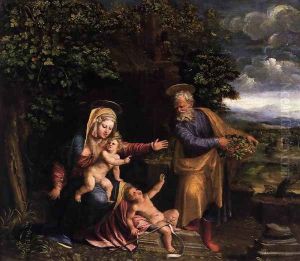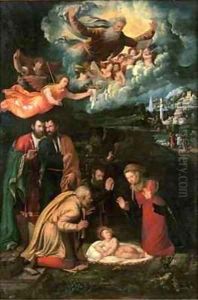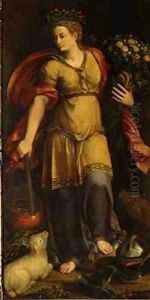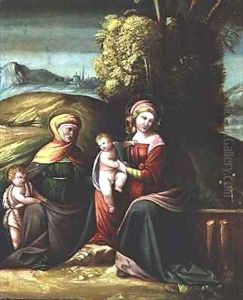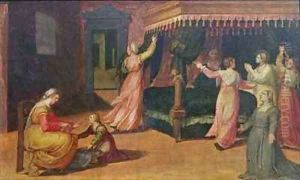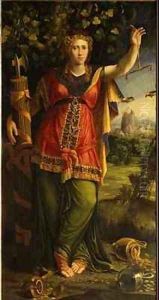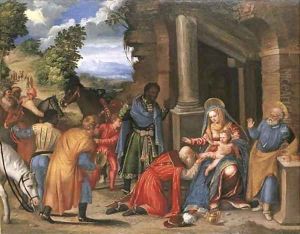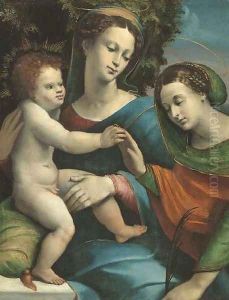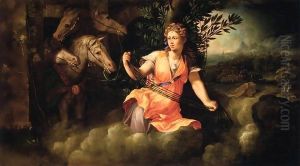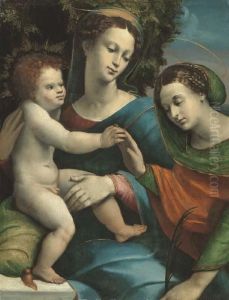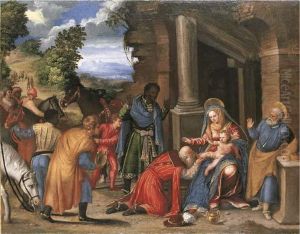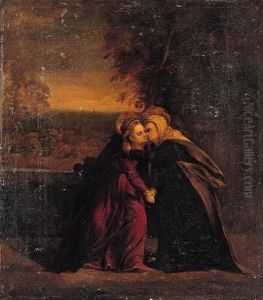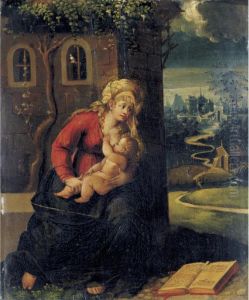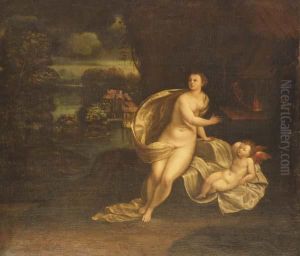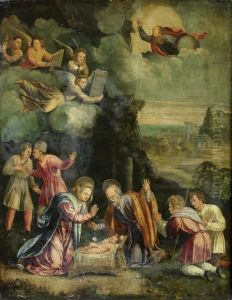Battista Dossi Paintings
Battista Dossi, also known as Battista de Luteri, was an Italian Renaissance painter who is remembered primarily for his collaborations with his more famous brother, Dosso Dossi. Born around 1490 in the town of Tramuschio, Mirandola, near Ferrara, Italy, Battista was part of the rich artistic environment of the Ferrara School during the Renaissance period. The precise details of his early life and training are somewhat obscure, but it is known that he worked closely with his brother, Dosso, who had a significant influence on his style and technique.
Battista's works are often characterized by their imaginative landscapes and vibrant use of color, traits he shared with Dosso. The brothers worked together in the court of Alfonso I d'Este, Duke of Ferrara, where they contributed to the decoration of the ducal palace, including the famous Camerino d'Alabastro (Alabaster Room). Battista's individual contributions are difficult to distinguish from those of his brother due to their collaborative working style and similar techniques.
Despite the challenges in attributing specific works to Battista alone, several paintings are generally recognized as his, showcasing his skill in handling mythological and religious subjects. His works display a keen attention to detail and a profound understanding of narrative composition, which were highly valued during his time.
After the death of Duke Alfonso in 1534, the Dossi brothers continued to work in Ferrara and its surrounding areas for the Este family and other patrons. However, Battista's career after this period is less documented, and his works from this later phase are scarce.
Battista Dossi passed away in 1548 in Ferrara. Although overshadowed by the success and fame of his brother, Battista's contributions to the Italian Renaissance and the Ferrara School of painting remain significant. His collaboration with Dosso Dossi represents an important chapter in the history of Italian art, illustrating the close working relationships and shared artistic visions that often existed among family members during the Renaissance.
